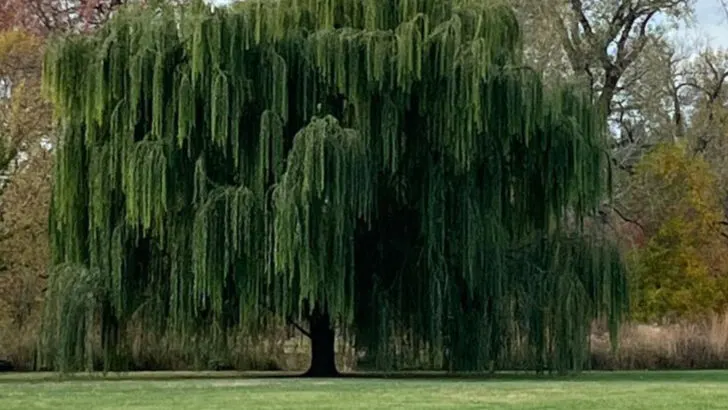When we think of colorful leaves, we usually picture fall foliage—those golden, fiery reds and glowing oranges that show up for a few weeks, put on a stunning display, and then vanish. But what if we told you there are trees that serve up that kind of gorgeous leaf drama in every season, not just autumn? Yep, they exist. And they’re here to upgrade your garden from “nice” to “did you hire a landscape designer?”
Some trees are overachievers when it comes to leaf color. While others go dormant or drop bland brown foliage, these stunners keep things vibrant with bright green, deep purple, rich burgundy, or even silver and variegated tones—from spring to winter. Whether it’s fresh new growth, glossy summer shimmer, or unexpectedly colorful leaf drops, these trees keep your yard interesting long after the fall fanfare is over.
If you’re dreaming of a landscape that always looks like it has a filter on it, or just want something that pulls double duty with shade and style, these 15 trees deliver year-round curb appeal—without waiting for October. From tropical show-offs to hardy ornamentals, these picks prove that you don’t have to settle for boring branches nine months out of the year. Prepare for compliments.
Japanese Maple
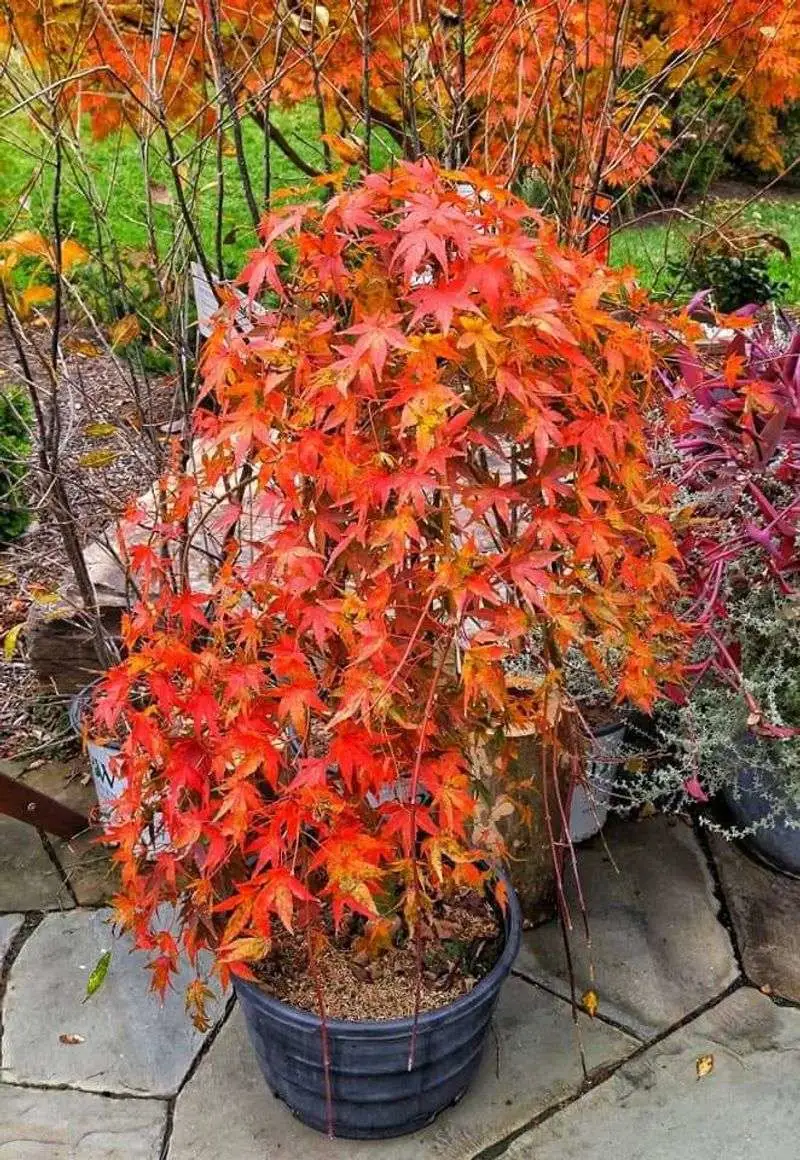
The Japanese Maple is a true testament to nature’s artistry. Its delicate, hand-like leaves dance through a spectrum of colors. From rich burgundies in spring to vibrant oranges in summer, it captivates all year round. This tree stands as a symbol of patience and peace in a garden.
An elegant choice for those who appreciate subtle beauty, the Japanese Maple thrives in both full sun and partial shade. Its compact size makes it ideal for smaller gardens. Did you know this tree has been cultivated in Japan for centuries? Its historical roots are as deep as its aesthetic impact.
Eucalyptus
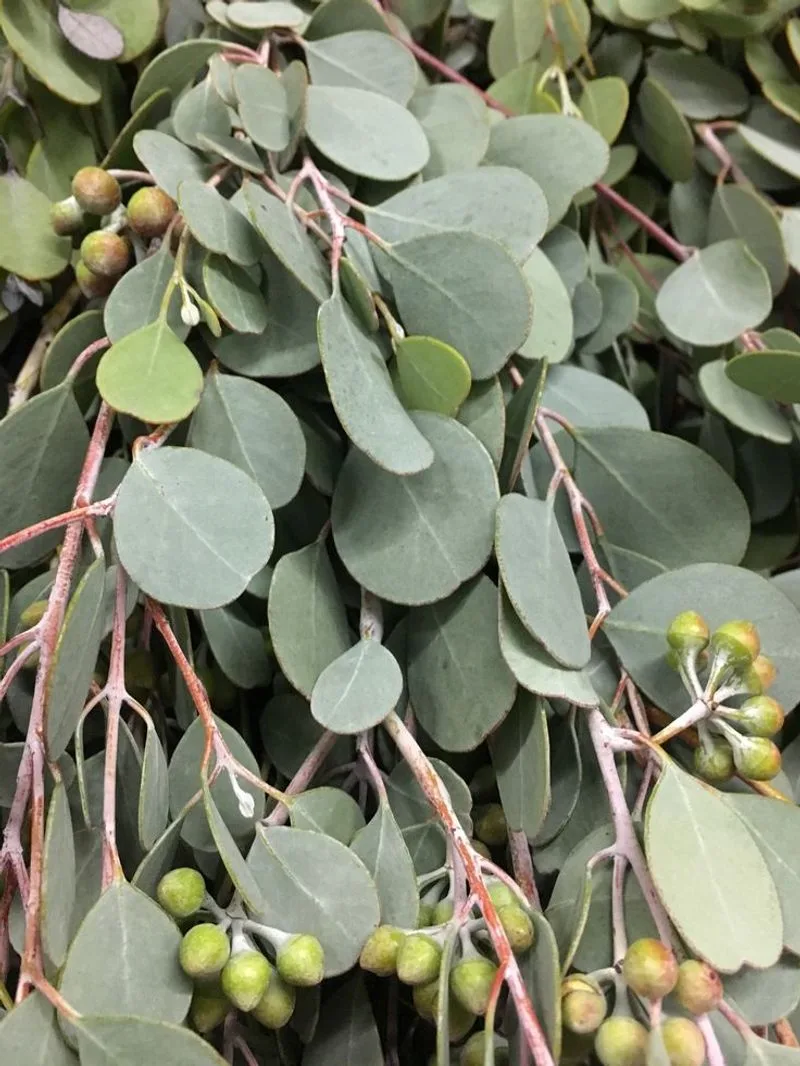
Eucalyptus trees stand out with their distinctive, aromatic leaves and peeling bark. Their blue-green foliage offers a soothing backdrop, gently rustling in the breeze. These trees are more than just koala food; they’re icons of resilience.
Their evergreen nature ensures that they remain a constant presence in any landscape. Eucalyptus trees are adaptable, thriving in a variety of climates, and their height can create a striking vertical element. Interestingly, the essential oils from their leaves are used globally for medicinal purposes, making them not only beautiful but incredibly useful.
Magnolia
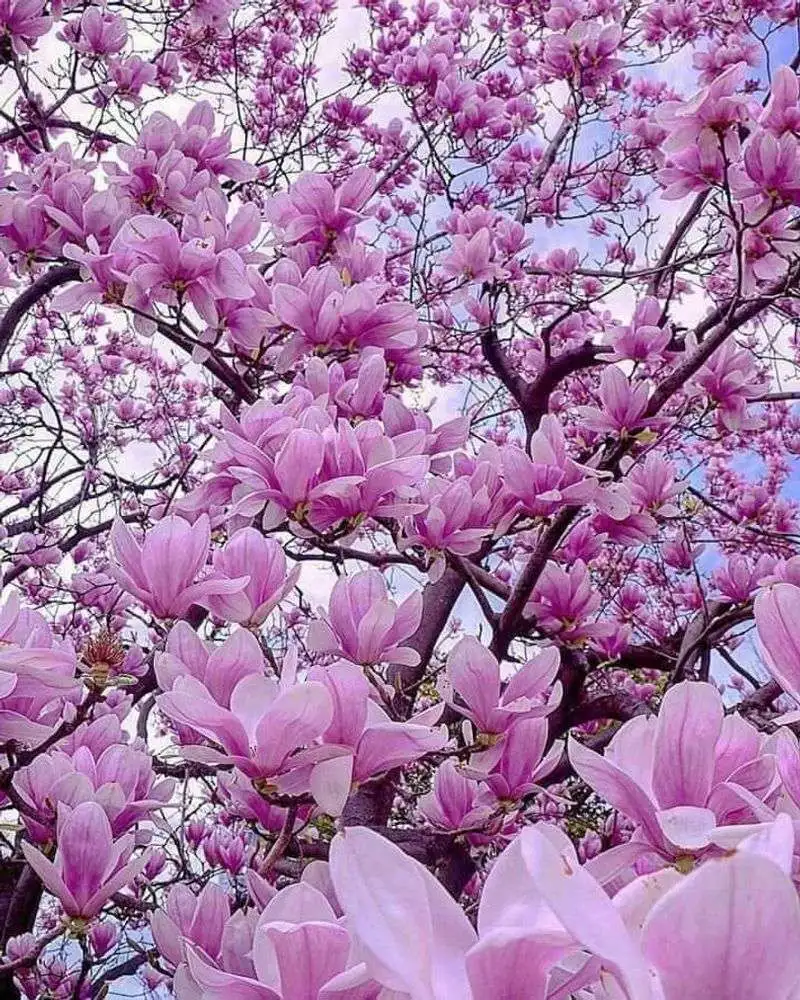
Magnolia trees are the epitome of elegance, with their glossy green leaves and spectacular blooms. Even without their famous flowers, the leaves hold their own charm, creating a lush canopy. This tree is synonymous with Southern grace.
Magnolias prefer sunny spots and well-drained soil, rewarding gardeners with their stunning foliage throughout the year. Their large leaves offer ample shade, making them perfect for a lazy afternoon read. Historically, magnolias have been around since before bees, pollinated instead by beetles. Their story is as rich as their blooms.
Ginkgo Biloba
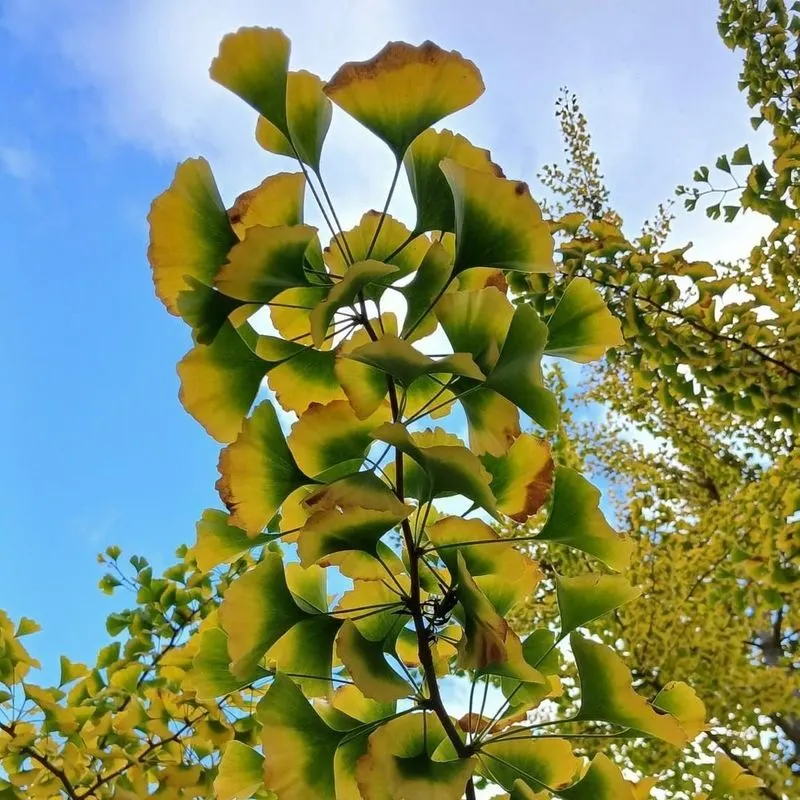
Ginkgo Biloba, often known for its unique fan-shaped leaves, is a relic from the age of dinosaurs. These leaves charm with their golden hues, especially in fall, but remain captivating throughout the year.
Often planted in urban areas for their resilience, Ginkgo trees thrive where others might struggle. Their foliage brings a touch of ancient history to modern surroundings. Fascinatingly, Ginkgo is used in traditional medicine, believed to enhance memory and circulation. Its leaves aren’t just pretty; they connect us to the past.
Redbud
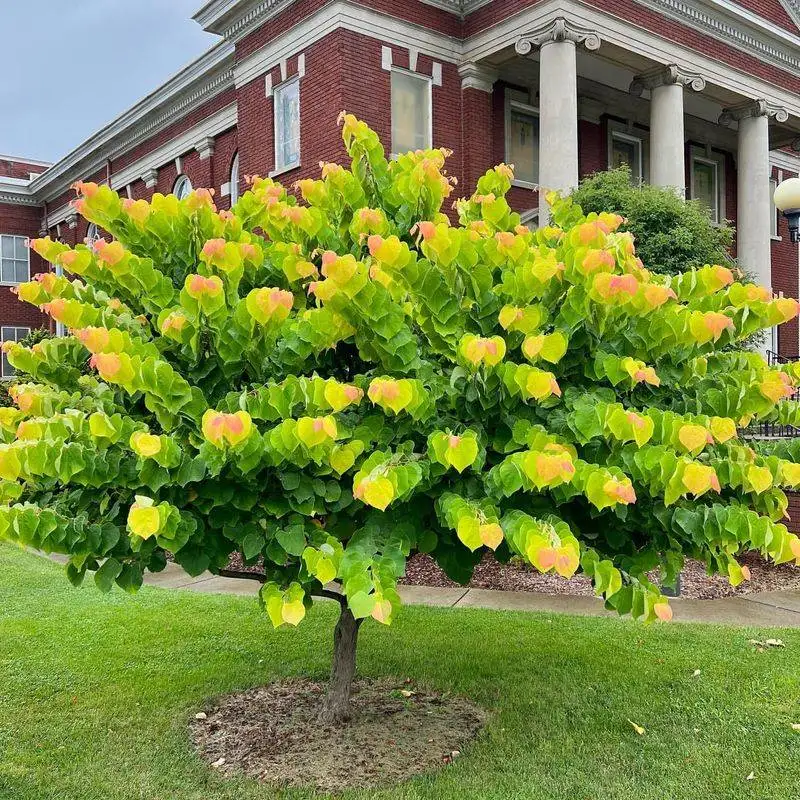
Redbud trees herald the arrival of spring with their pink blossoms, but their heart-shaped leaves keep interest alive well after petals fall. Even in summer’s heat, the leaves create a calming green shade.
These trees are relatively easy to care for, thriving in various soil types. Redbuds are perfect for adding a splash of color to any garden. Did you know that the young pods of Redbud trees are edible, often likened to snow peas? This tree offers beauty and a culinary twist.
Weeping Willow
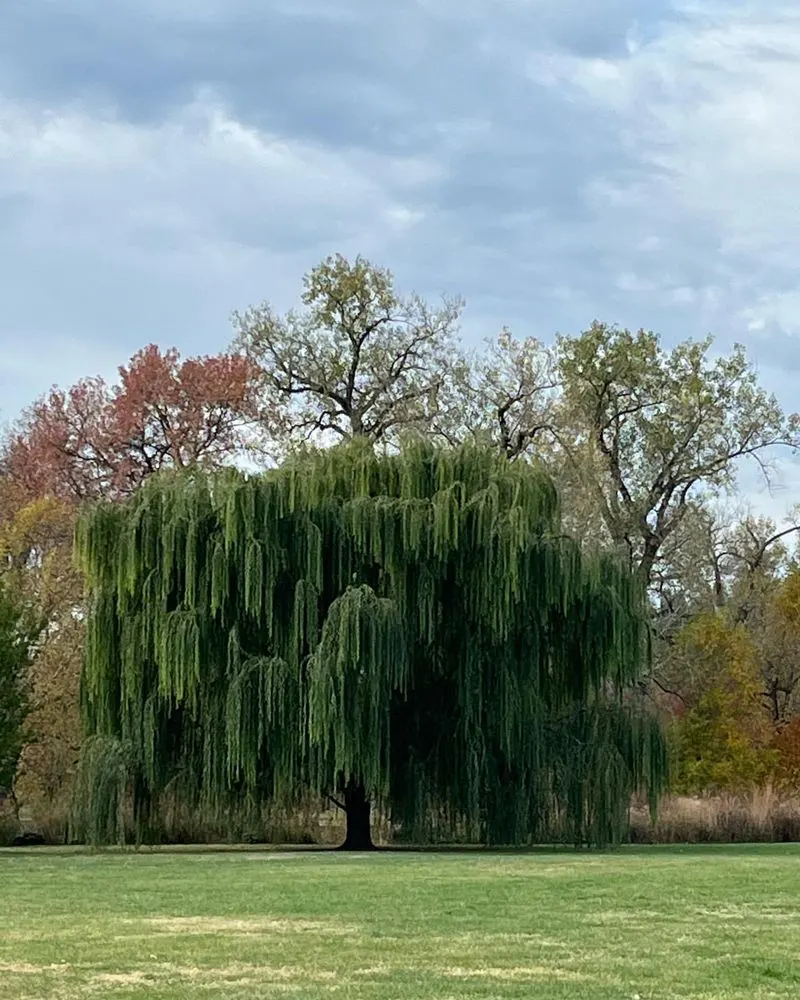
The Weeping Willow, with its iconic drooping branches, creates a serene and almost poetic scene. Its leaves whisper secrets to the passing wind, offering a tranquil vibe to any landscape.
Thriving near water bodies, Weeping Willows are a favorite for those looking to create a natural oasis. Their extensive root systems help control soil erosion. Interestingly, these trees have been immortalized in literature and art, symbolizing elegance and grace. They are as much a part of cultural heritage as they are of nature’s canvas.
Olive Tree
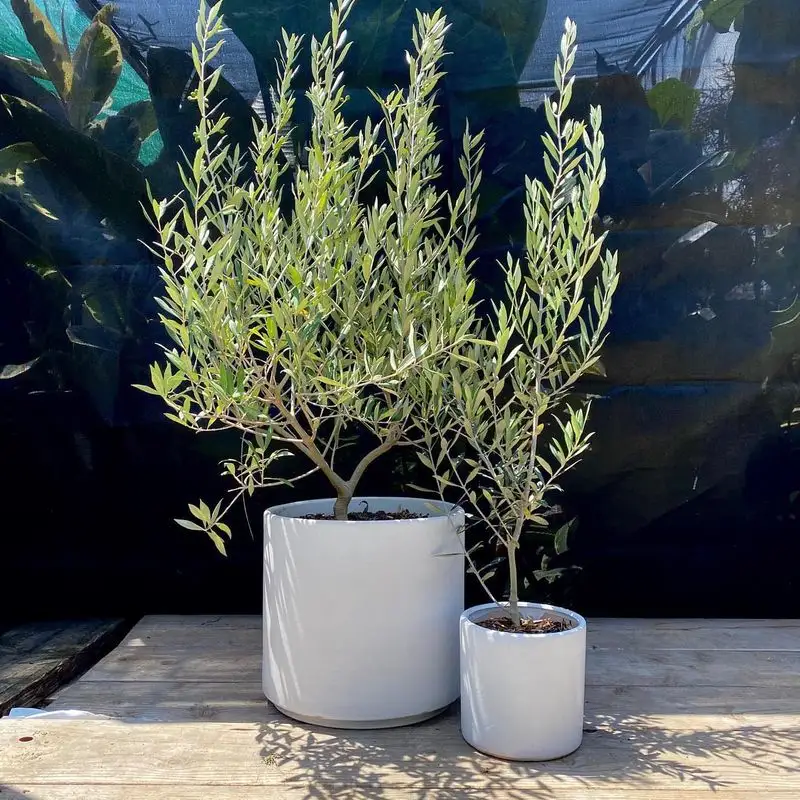
Olive trees are not just for their fruit; their silvery-green leaves provide a constant, shimmering presence. These trees stand as ancient sentinels in Mediterranean landscapes, their gnarled branches telling tales of centuries past.
Olive trees thrive in sunny, dry conditions, making them ideal for drought-tolerant gardens. Their slow growth and resilience are testaments to nature’s patience. Did you know that some olive trees are over a thousand years old, still producing fruit today? Their enduring beauty is matched only by their historical significance.
Sweetgum
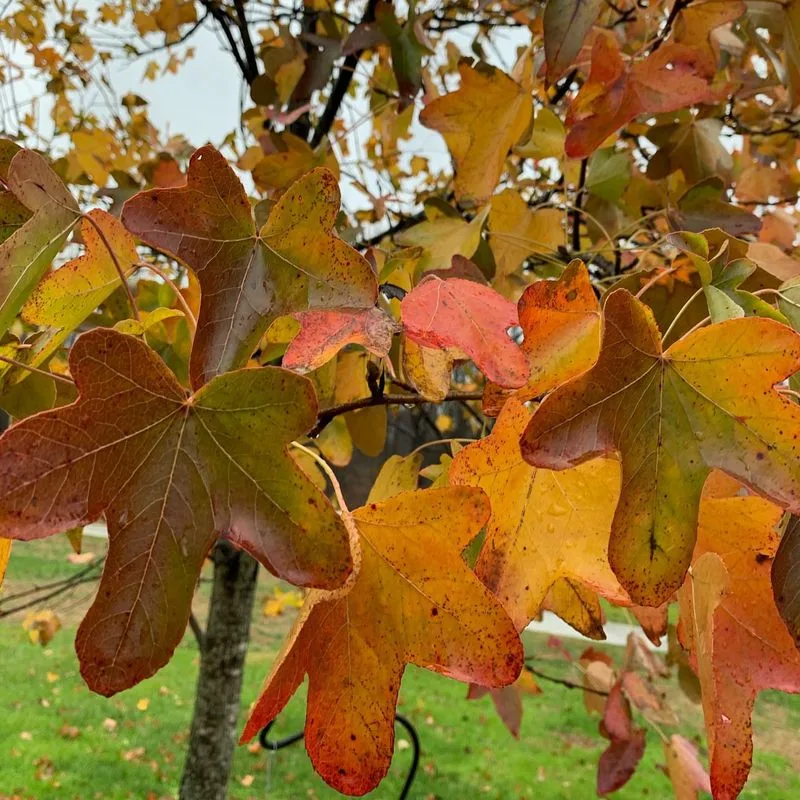
Sweetgum trees are known for their star-shaped leaves that transform into a kaleidoscope of colors. From green to purple, these leaves create a visual feast for the eyes, especially in autumn.
These trees are versatile, thriving in various soils and climates. Sweetgums are often planted in parks and streets for their shade and ornamental value. Interestingly, the tree’s resin, once used in perfumes and medicines, adds an aromatic dimension to its appeal. Its vibrant presence is both a visual and sensory delight.
Birch
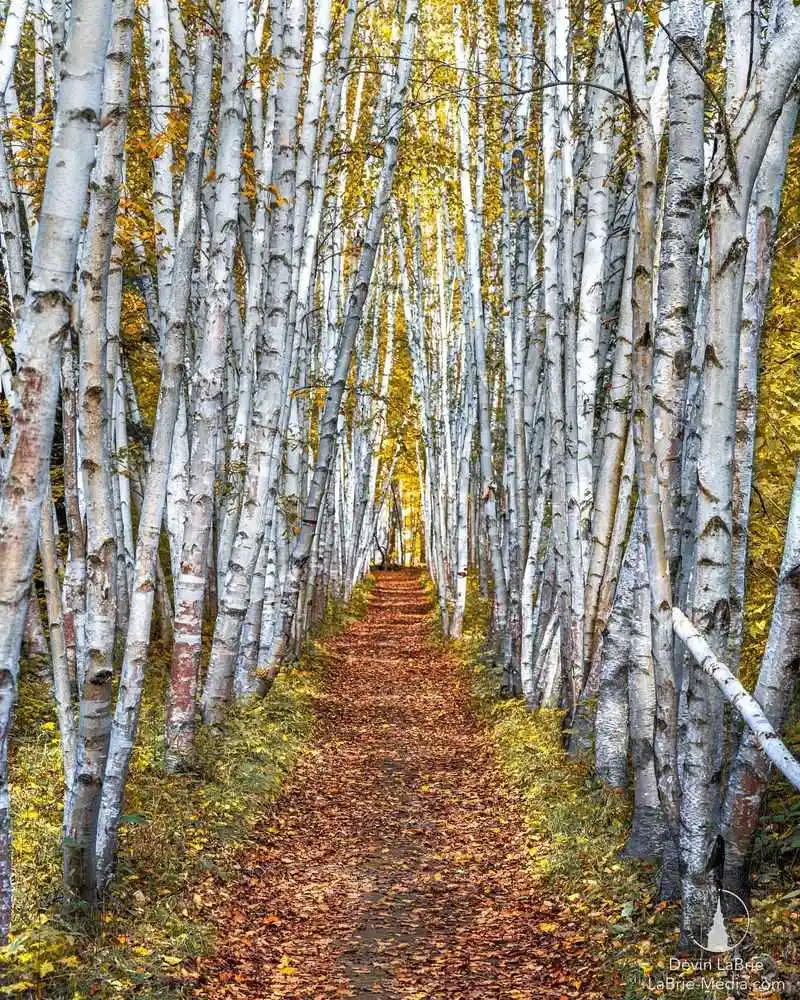
Birch trees are celebrated for their striking white bark and delicate leaves. Their triangular leaves flutter in the slightest wind, creating a soothing sound and dappled shade.
Birches are commonly found in cool climates, providing a stark contrast with their surroundings. They are often associated with renewal and resilience, thriving even in less fertile soils. Historically, birch bark was used for writing, crafting, and even in traditional medicine. Their beauty is both visual and historical, a true multi-sensory experience.
Holly
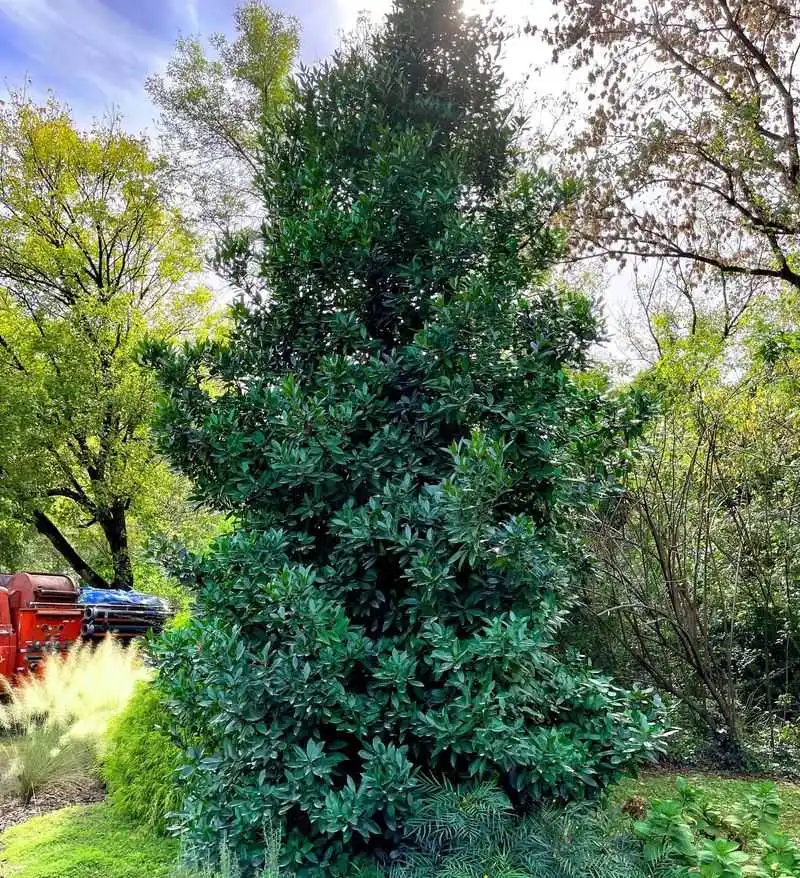
Holly trees bring festive cheer with their glossy, spiky leaves and bright red berries. Even outside of holiday decoration, their evergreen foliage offers year-round visual interest.
These trees are hardy and adaptable, often used in landscaping for hedges and borders. Holly leaves provide a striking contrast to their vibrant berries, making them a favorite for winter gardens. Did you know that in ancient times, holly was believed to protect homes from lightning and evil spirits? Their folklore is as rich as their appearance.
Crape Myrtle
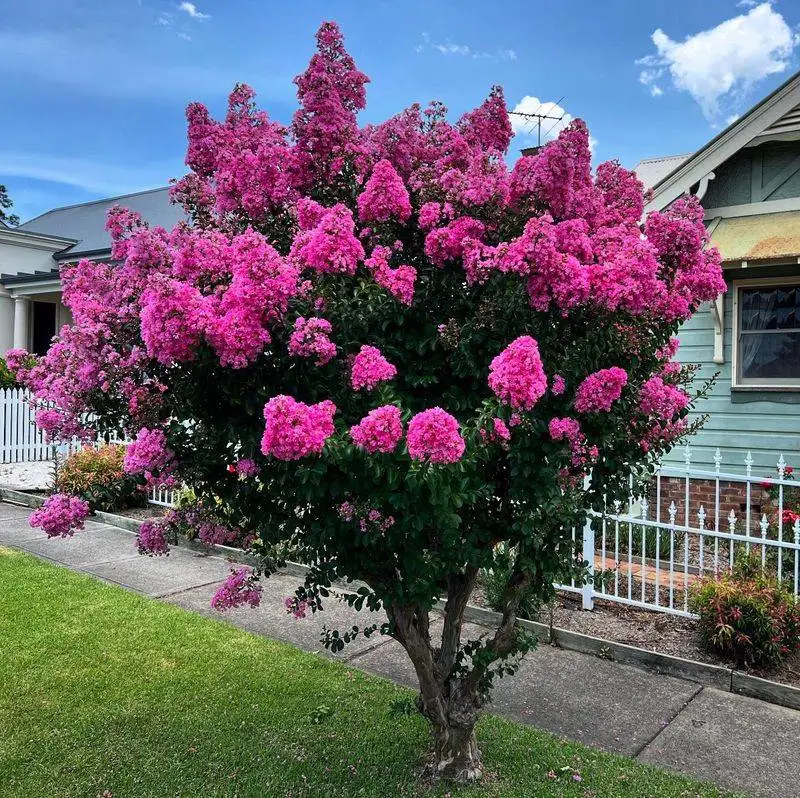
Crape Myrtle trees are a summer spectacle with their abundant lavender blooms, but their leaves deserve equal admiration. The smooth, peeling bark and vibrant foliage offer a unique texture and color.
These trees thrive in warm climates, gracing gardens with their long-lasting flowers and attractive leaves. Crape Myrtles are beloved for their ability to withstand heat and drought. Interestingly, they are often referred to as the “lilacs of the south,” a nod to their prolific and fragrant blooms.
Silver Birch
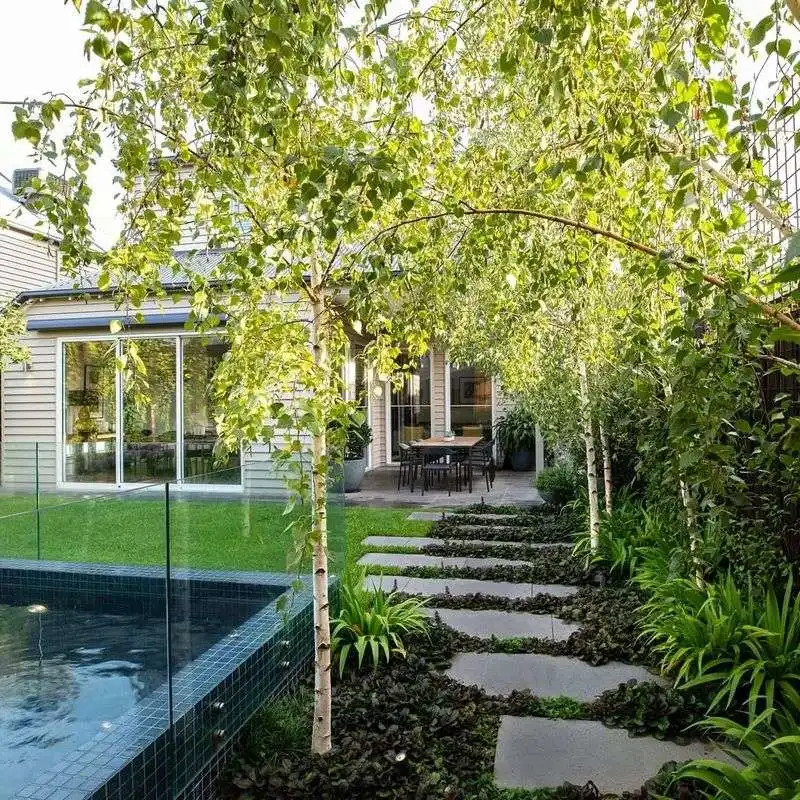
Silver Birch trees, with their slender white bark and gently fluttering leaves, create a magical woodland atmosphere. Their leaves turn a bright yellow in autumn, yet remain charming year-round.
Common in Northern Europe, Silver Birches are symbols of purity and new beginnings. Their bark has traditionally been used for crafting and is waterproof, a fascinating natural trait. The ethereal presence of these trees makes them a favorite in both natural and landscaped settings.
Cherry Blossom
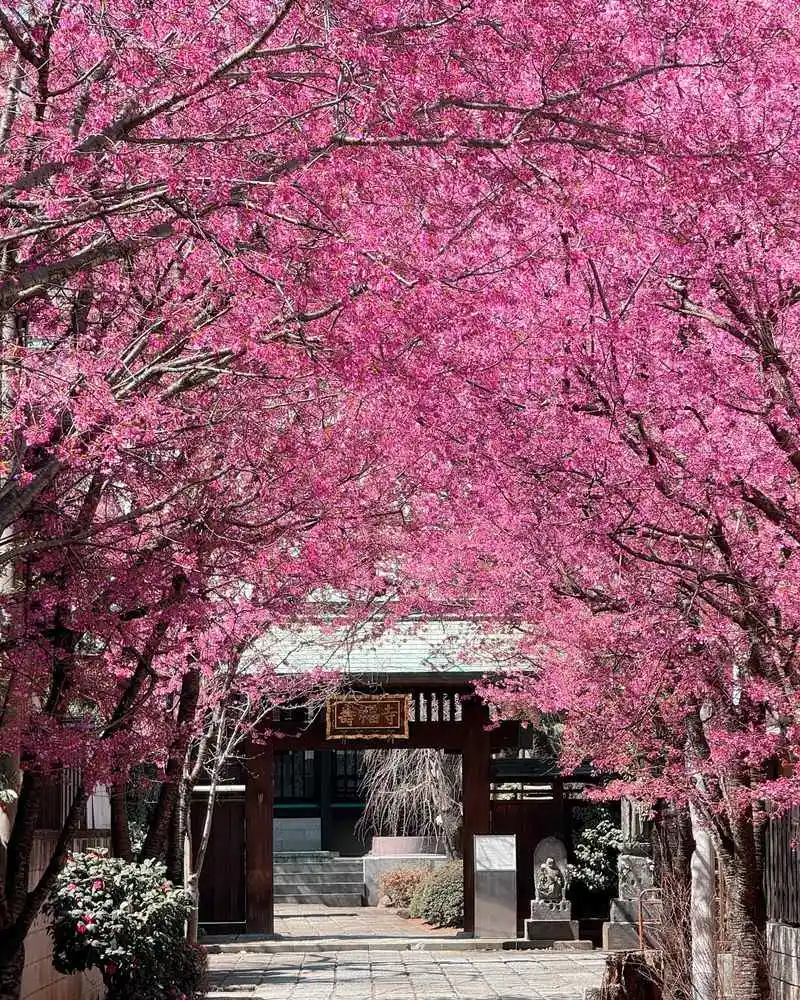
Cherry Blossom trees, renowned for their ephemeral blossoms, offer more than just fleeting beauty. Their light green leaves provide a serene backdrop once the petals fall.
These trees symbolize the transient nature of life, celebrated in festivals worldwide. While the blossoms get all the attention, the foliage adds enduring elegance to gardens. Did you know that cherry wood is highly prized for furniture and instruments? This tree’s contributions go beyond its visual appeal, offering practical beauty as well.
Aspen
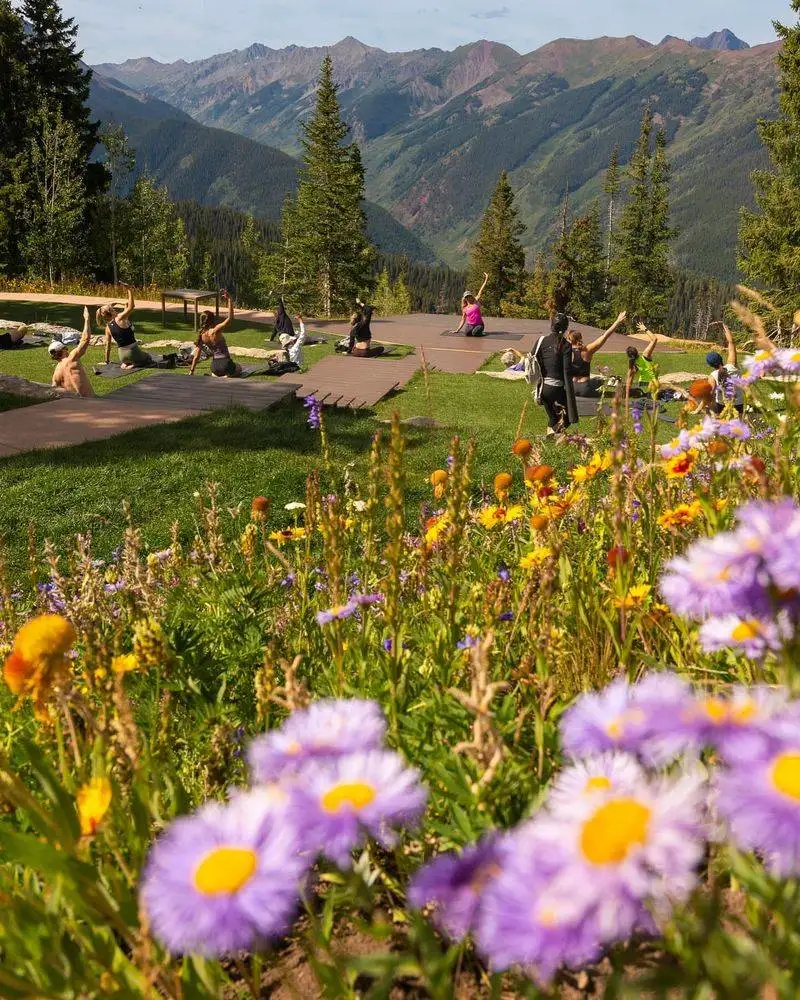
Aspen trees are famous for their “quaking” leaves, trembling delicately in the slightest breeze. Their smooth white bark adds a striking contrast to their vibrant greenery.
Often found in mountainous regions, Aspens are known for their ability to thrive in poor soil. They form extensive root systems, allowing new growth to sprout easily. Interestingly, an entire grove of Aspens is often a single organism, sharing the same root system, a testament to their interconnectedness and resilience.
Dogwood
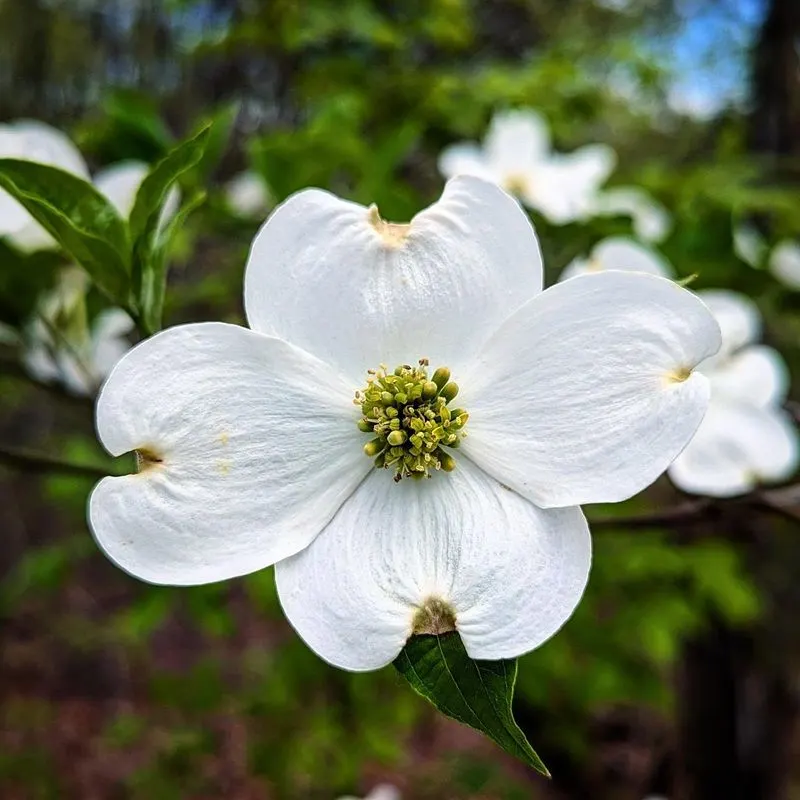
Dogwood trees are cherished for their showy white blossoms, but their oval green leaves maintain interest long after the flowers fade. The foliage provides a lush, textured canopy.
These trees are popular in landscaping for their compact size and attractive leaves. Dogwoods thrive in well-drained soil and partial shade. Historically, their wood was used for tool handles and weaving shuttles, valued for its strength and rigidity. The tree’s multifaceted beauty and utility make it a beloved choice for gardens.

